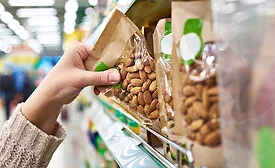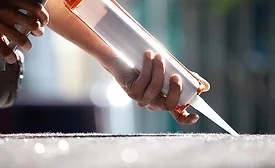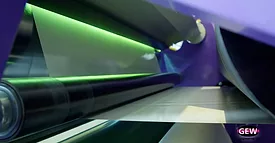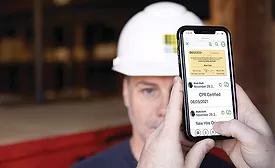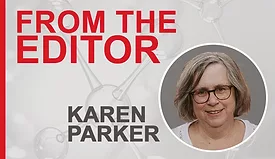Home » Publications » Adhesives & Sealants Industry
Adhesives & Sealants Industry
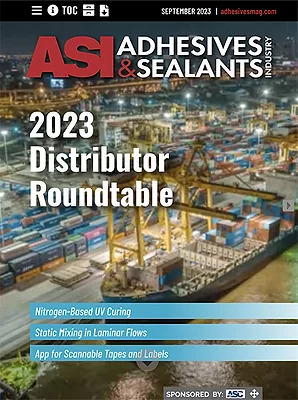
September 2023
Cover Story
Back to TopLeaders in the distribution of raw materials and chemicals provide updates on the state of the industry and what they expect for the adhesives and sealants industry going forward.
Read More
Features
Back to TopImproving Appearance with Solventless Laminating Adhesives
While solventless laminating adhesives offer cost, performance, and sustainability benefits, care must be taken to follow recommended settings that ensure optimal appearance.
September 12, 2023
Choosing the Right Filling System
Adhesive and sealant manufacturers have a variety of options when selecting a filling system for their products.
September 12, 2023
Introduction to Static Mixing in Laminar Flows
The first of a three-part series on static mixing, this article focuses on the different mixing principles in laminar mixing and the typical mixer geometries derived from them.
September 13, 2023
Why Nitrogen-Based UV Curing is the Future of Label Making
As UV curing gains in popularity, using nitrogen in the curing process produces better results for pressure sensitive adhesives.
September 14, 2023
The Economic, Performance, and Sustainability Value in UV Acrylic Hot Melt PSAs
A well-designed UV acrylic PSA improves on the sustainability profile of emulsion acrylic PSAs while maintaining the performance of solvent-based PSAs.
September 15, 2023
Scannable Tapes and Labels Use App to Connect Objects to Locations and Digital Information
Combining traditional tools like adhesive tapes and labels with modern app technology, two companies partnered to create a solution that is solving real and timely issues in a number of industries.
September 18, 2023
Columns
Back to TopFEICA Outlines Position on Packaging and Packaging Waste Regulation
When reviewing revisions to EU packaging and packaging waste regulation, innovative packaging that may not be covered by the design for recycling criteria should be allowed to prove recyclability through testing.
September 20, 2023
Connect, Collaborate, Cultivate: Strengthening Our Industry by Working Through Challenges Together
The PSTC Fall Member Business Meeting is a unique opportunity to connect and collaborate with PSTC members.
September 22, 2023
From the Editor
Climate-Driven Extreme Events and the Supply Chain
Climate-related issues, such as El Niño weather events and falling water levels in major waterways, are creating problems for global shipping.
September 25, 2023
Keep the info flowing with our newsletters!
Get the latest industry updates tailored your way.
JOIN TODAY!Copyright ©2025. All Rights Reserved BNP Media.
Design, CMS, Hosting & Web Development :: ePublishing


